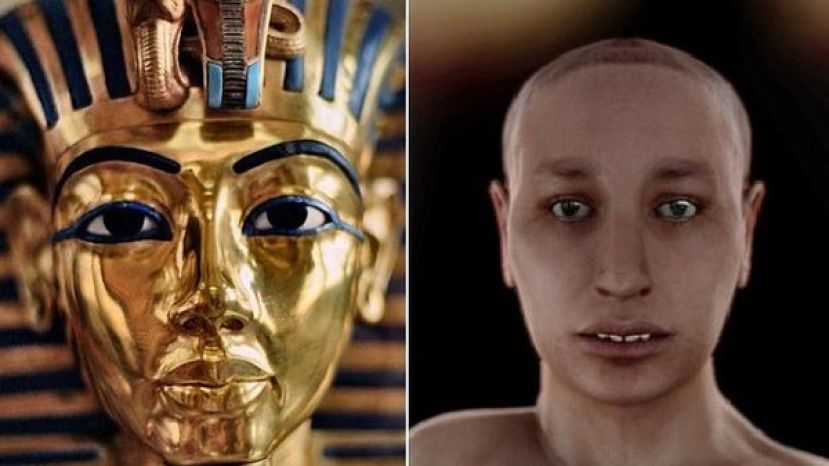King Tutankhamun, an icon of Ancient Egypt, reportedly had buck teeth, wide hips and a severe limp, digitally recreated images have shown.
In a BBC documentary which airs next Sunday, researchers found that the most famous Pharaoh may have not lived the life insinuated by his majestic golden burial mask and other historical records.
Famous for being a young king with a passion for chariot racing, researchers suggests that a club foot would have made it impossible for him to race.
“The virtual autopsy shows the toes are divergent – in layman’s terms it’s club foot. He would have been heavily limping,” Egyptian radiologist Ashraf Selim said.
Additionally, 130 used walking canes found in his tomb support this claim, Britain's Daily Mail reported.
The revelations are the result of a “virtual autopsy,” based on more than 2,000 computer scans, along with a genetic analysis of the boy king’s family, which suggests that his parents were siblings.
While myths suggest the young king was murdered or died after a chariot crash, the incestuous nature of his parent’s union may have contributed to Tutankhamun’s premature death due to an inherited illness.
Only one of the fractures found on his body were suffered before his death, the British daily reported.
“There is only one site where we can say a fracture happened before he died and that is the knee,” Selim said.
Several members of Tutankhamun’s family had suffered illnesses that may have been posed by hormonal imbalances, Hutan Ashrafian, a lecturer in surgery at Imperial College London, said.
“A lot of his family predecessors lived to a ripe old age. Only his immediate line were dying early, and they were dying earlier each generation,” Ashrafian explained.
Tut was the child of Akhenaten, who had a relationship with his sister, Albert Zink, from the Institute for Mummies and the Iceman in Italy said.
Incest was not forbidden nor frowned upon in Ancient Egyptian society as people were not aware of the health implications on children.







